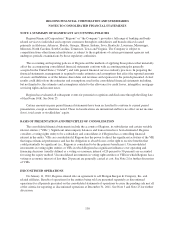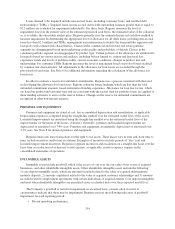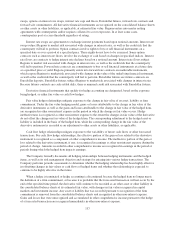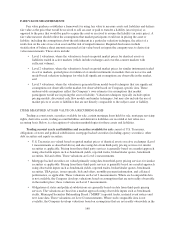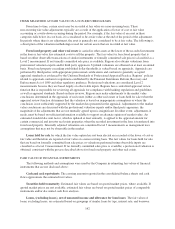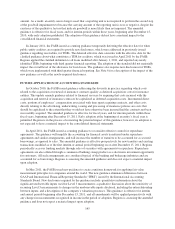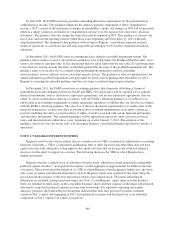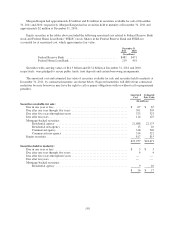Regions Bank 2011 Annual Report Download - page 164
Download and view the complete annual report
Please find page 164 of the 2011 Regions Bank annual report below. You can navigate through the pages in the report by either clicking on the pages listed below, or by using the keyword search tool below to find specific information within the annual report.FAIR VALUE MEASUREMENTS
Fair value guidance establishes a framework for using fair value to measure assets and liabilities and defines
fair value as the price that would be received to sell an asset or paid to transfer a liability (an exit price) as
opposed to the price that would be paid to acquire the asset or received to assume the liability (an entry price). A
fair value measure should reflect the assumptions that market participants would use in pricing the asset or
liability, including the assumptions about the risk inherent in a particular valuation technique, the effect of a
restriction on the sale or use of an asset and the risk of nonperformance. Required disclosures include
stratification of balance sheet amounts measured at fair value based on inputs the company uses to derive fair
value measurements. These strata include:
• Level 1 valuations, where the valuation is based on quoted market prices for identical assets or
liabilities traded in active markets (which include exchanges and over-the-counter markets with
sufficient volume),
• Level 2 valuations, where the valuation is based on quoted market prices for similar instruments traded
in active markets, quoted prices for identical or similar instruments in markets that are not active and
model-based valuation techniques for which all significant assumptions are observable in the market,
and
• Level 3 valuations, where the valuation is generated from model-based techniques that use significant
assumptions not observable in the market, but observable based on Company-specific data. These
unobservable assumptions reflect the Company’s own estimates for assumptions that market
participants would use in pricing the asset or liability. Valuation techniques typically include option
pricing models, discounted cash flow models and similar techniques, but may also include the use of
market prices of assets or liabilities that are not directly comparable to the subject asset or liability.
ITEMS MEASURED AT FAIR VALUE ON A RECURRING BASIS
Trading account assets, securities available for sale, certain mortgage loans held for sale, mortgage servicing
rights, derivative assets, trading account liabilities and derivative liabilities are recorded at fair value on a
recurring basis. Below is a description of valuation methodologies for these assets and liabilities.
Trading account assets and liabilities and securities available for sale consist of U.S. Treasuries,
obligations of states and political subdivisions, mortgage-backed securities (including agency securities), other
debt securities and equity securities.
• U.S. Treasuries are valued based on quoted market prices of identical assets on active exchanges (Level
1 measurements as described above) and also using data from third-party pricing services for similar
securities as applicable. Pricing from these third party services is generally based on a market approach
using observable inputs such as benchmark yields, reported trades, broker/dealer quotes, benchmark
securities, bid and offers. These valuations are Level 2 measurements.
• Mortgage-backed securities are valued primarily using data from third-party pricing services for similar
securities as applicable. Pricing from these third-party services is generally based on a market approach
using observable inputs such as benchmark yields, reported trades, broker/dealer quotes, benchmark
securities, TBA prices, issuer spreads, bids and offers, monthly payment information, and collateral
performance, as applicable. These valuations are Level 2 measurements. Where such comparable data
is not available, the Company develops valuations based on assumptions that are not readily observable
in the market place; these valuations are Level 3 measurements.
• Obligations of states and political subdivisions are generally based on data from third-party pricing
services. The valuations are based on a market approach using observable inputs such as benchmark
yields, Municipal Securities Rulemaking Board (“MSRB”) reported trades, material event notices and
new issue data. These valuations are Level 2 measurements. Where such comparable data is not
available, the Company develops valuations based on assumptions that are not readily observable in the
140


